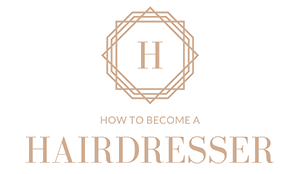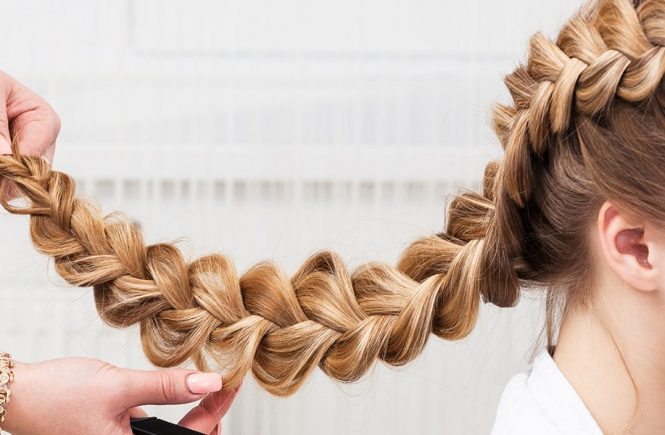Hairdressing is a great career choice, being responsible for making your client feel truly beautiful while at the same time expressing your creative side can give you a career full of great personal fulfilment. Then you have one of “those” days, were everything seems to go wrong and you feel the complete opposite. As with any career, you experience times that are good and others, not so good. You may even at times ask yourself “What am I doing?”, or “Why am I here?”.
This is all perfectly normal and we’re here help you understand the highs and lows of being a hairdresser. To reassure you that it’s all part of the journey and something that we all go through at some stage.
One of the greatest highs of being a hairdresser is you get to work in a creative, dynamic environment where you get to experience something different every day. As a hairdresser you get to meet a lot of interesting people. You also have the power to not only transform the way your client looks but also how they feel about themselves. Each client in the chair presents a new challenge with their own unique wants and requirements. Exceed these and you will feel for yourself the greatest sense of pride and satisfaction that any career can give.
Hairdressing is also a very flexible career choice. There are plenty of work options available to suit your preference. From working standard salon hours, to taking appointments only on days that suit you or freelance and go mobile. Being a mobile hairdresser could be anything form visiting clients in their homes, being a session stylist on shoots or sets to travelling the world renting a chair in any destination you choose. As long as you’re willing to put in the hard work, all you need is your scissors, comb and sense of style.
Another perk is that you get to try an amazing variety of skills and techniques on a daily basis. For example you may give mostly haircuts, but also have some styling appointments, chemical services (such as colour, perms and straightening services). Some clients may even willingly encourage you to push the limits and are happy to be part of the process. Giving you not only great inspiration but an opportunity to add to your portfolio.
While working day to day as a hairdresser you’ll also develop people skills as you will regularly meet and engage in conversation with some very interesting people. Your social skills will become highly refined as you learn how to deal with some interesting personalities, you may even find yourself engaging in client psychology. Furthermore you have the opportunity to attend industry events which provide a fantastic opportunity to network and get in contact with like-minded professionals. These are real world interpersonal skills that are valuable to you not just as hairdresser, but any career path you may decide to pursue.
Employers in the hair industry see the benefit in upskilling and furthering the training of stylists in the salon. It is in their best interest to do so as it makes you more appealing to clients more valuable to the salon. Career development could include anything from small local training classes to interstate or even overseas industry events. Either way an employer’s investment in your future is in an investment in their own business.
Of course, as with any profession, there are the things that ae not so appealing, the lows. These make the profession more challenging, and should be considered before you decide to become a hairdresser.
While your decision to become a hairdresser should not just be about the money, it is an important to consider what effect can have an effect on how you may feel during the early stages of your career. When you’re starting things can seem very overwhelming. Not only are you dealing with being in a new environment, with new responsibilities, it can also feel like you are working very hard for long hours for a relativity small reward. That’s not to say that hairdressing can’t be a well-paid career, it can be once you break past this barrier, hairdressers have the potential to earn a very decent living. As you progress it can also be a very well paying career choice especially if you are career driven and always strive to be bigger and better.
Being a hairdresser is physically demanding, in fact as a hairdresser you’ll spend almost all of your time on your feet. This physical stress can lead issues such as sore feet and ankles, back aches, joint pain and fatigue. Often physical stress can lower the immune system making you more vulnerable to other undesirable conditions. You can learn more about fatigue and other occupational risk here.
While a lot of the time interacting with clients can be a rewarding experience, there are times you may need to deal with difficult clients. There is no pleasing some people which means you need to be extra careful when communicating with them. Even though as hairdresser, your intent is to get the best result for the clients. There are days when a difficult customer can catch you by surprise. Doubly you may be feeling flat or unwell, and having to deal with this additional stress can really get you down. Experience can play a big role in dealing with client issues.
Being a hairdresser you are taking on a big responsibility each time you work with a client. Let’s face it a cut or style, gone wrong is worst case scenario for both the hairdresser and client. Sometimes things don’t go as planned and despite the best intentions or efforts to minimise the issue, the client may still be left a less than desirable outcome.
As a hair professional you will no doubt be very particular about your hair, in the same way a lot of clients can feel the same about there’s. When they come to you for a haircut, colour service, or other procedure, they expect you to make them look their best. Accidents do happen, and hair does grow back, but this can spoil an otherwise great ongoing relationship with the client. It never feels good being made to feel responsible for an unfortunate situation.
Being a hairdresser can be very competitive. Each year there are any number aspiring and talented hairdressers who have just completed training. Many more are also upskilling and specialising in certain trends and products. This is not necessarily a bad thing as competition is good for the industry, however it means that your training as a hairdresser is never really over. There are always new techniques being developed as well as new products and processes that need to be learned to remain current with trends and styles.
The issue with this is that for clients there is no shortage of choice. You can even see your client base may slowly decrease as they discover other options. You will need to innovate and learn to adapt in order to remain the hairdresser or salon of choice. Good relationships with clients do go a long way, however even loyal customers are happy to switch if it is convenient for them, or if they think they getting a better quality service. It’s just the way things are and if you let this get you down or take things personally, you can easily become discouraged.
Lows aside, hairdressing is and incredibly rewarding career choice. Throughout your career you will experience some incredible highs and likewise some demotivating lows. The thing to remember is that understanding the issues you potentially face is not only useful for deciding if hairdressing is for you, but can also prepare you for dealing with typical setback you can face. Awareness is half the battle and sharing with other like-minded hair professionals goes a long way to dealing with the common issues you may face.





